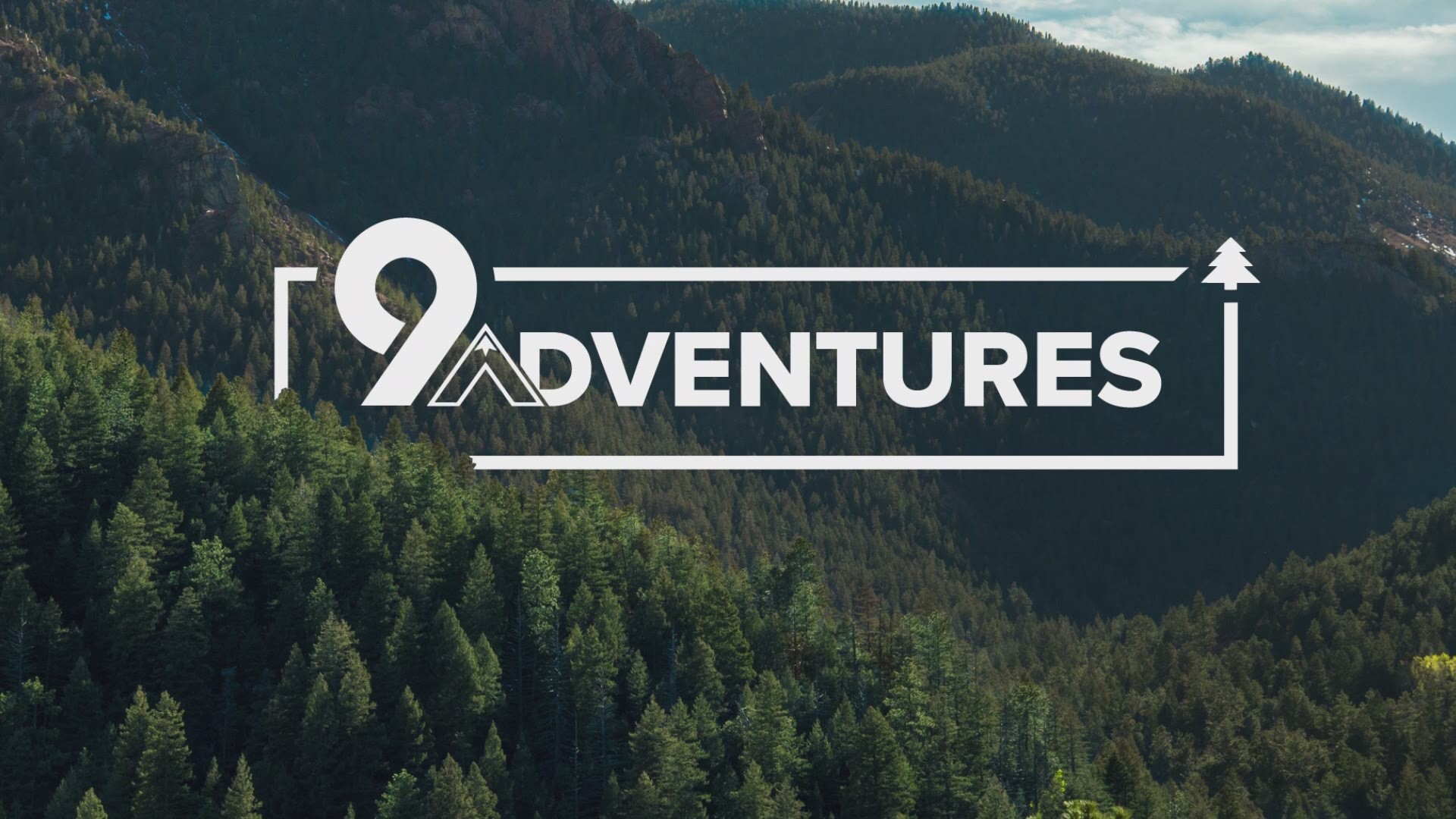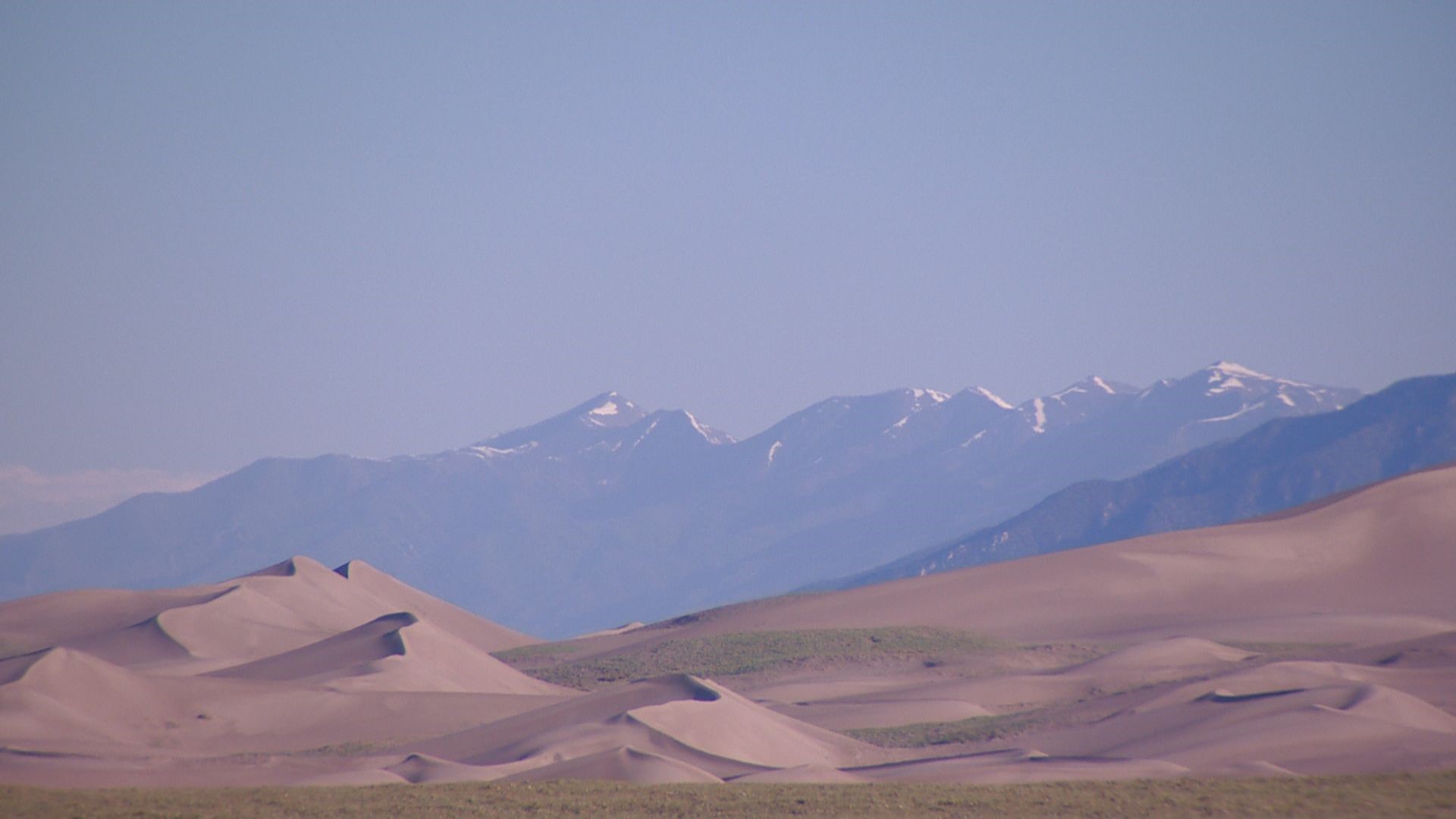MOSCA, Colo. — This year’s epic snowfall and cool spring has created unique phenomena across the state.
And there are few places that have benefited more than the Great Sand Dunes in the San Luis Valley. Thousands upon thousands of people have flocked there since local news (us included) highlighted the unique “surge flow” phenomenon happening at Medano Creek … and three weeks later, it’s still going on.
Haven’t made the trip to southern Colorado yet? Here’s a guide to how to make the most out of your Sand Dunes experience.
What are the Sand Dunes anyway?

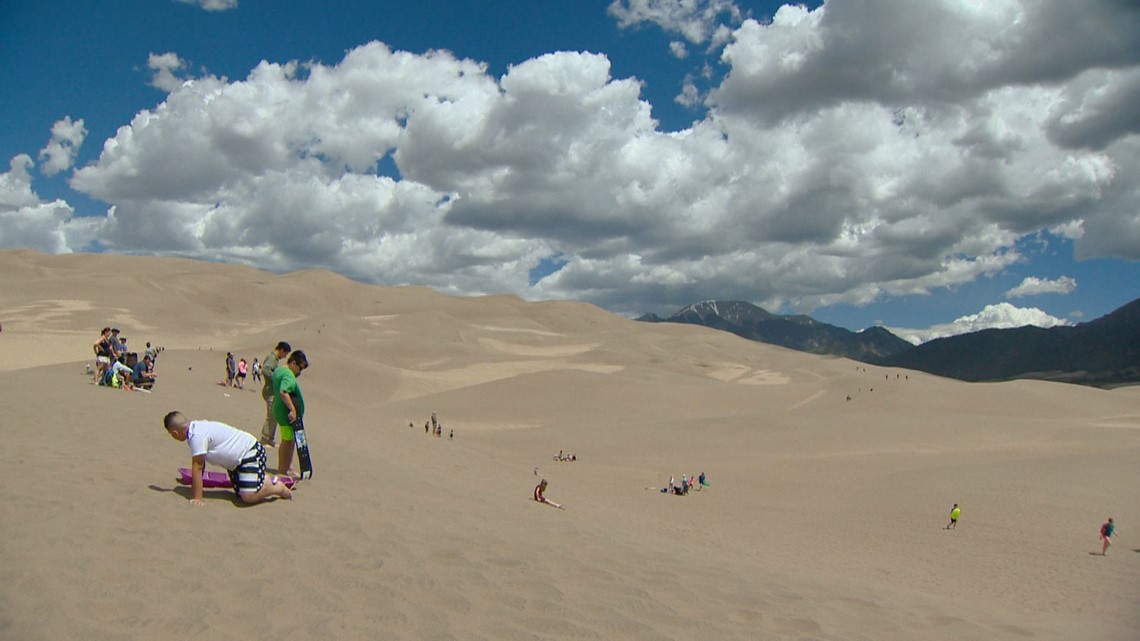
Great Sand Dunes National Park and Preserve has the tallest sand dunes in North America, against a beautiful backdrop of the Sangre de Cristo mountains. They are one of the most iconic sights in Colorado … and also a bit of a trek, since it’s about a four-hour drive from Denver.
The Sand Dunes were formed over thousands of years, as the southwest winds moved sand across the floor of the San Luis Valley into a little curve formed by the surrounding peaks.
Medano Creek runs on the boundary of the dunes over the beach-like sand, creating a sight you don’t typically see in Colorado.
Cost and camping

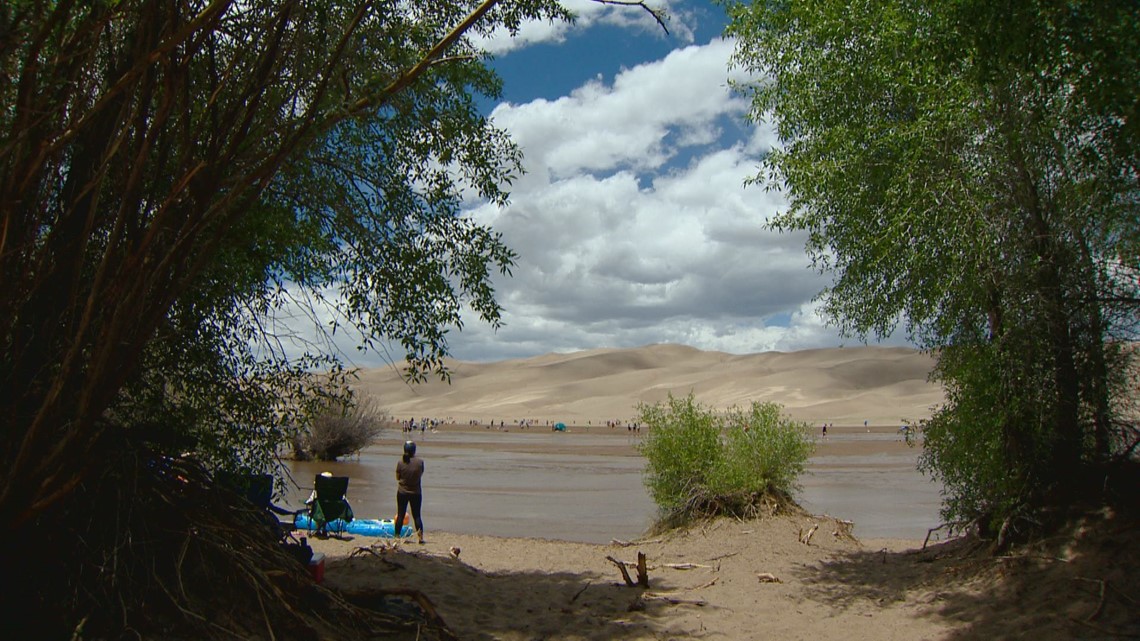
It’s $25 for a one-vehicle, seven-day pass at the Great Sand Dunes, and $45 for an annual pass. If you have a National Parks pass already, this will get you through the gate.
As for camping, Pinon Flats is just a few hundred feet away from Medano Creek and the Dunes, and has 88 sites. You can reserve sites online from May 1 to Sept. 30.
Pamela Rice, superintendent at Great Sand Dunes National Park and Preserve, said this time of year, they are usually all booked. If there are available sites, they're handed out on a first-come, first-serve basis. They’re $20 a night.
But right now, don’t bank on scoring one. Here’s what written in big red letters on the National Park Service’s website:
During the peak flow of Medano Creek in late May and early June, expect all campsites to be reserved well in advance. On weekends during peak flow, expect long lines of traffic, overflowing parking lots, and most campgrounds within 20 miles to be full. For a better experience in early summer, plan your visit on weekdays.
The surge flow

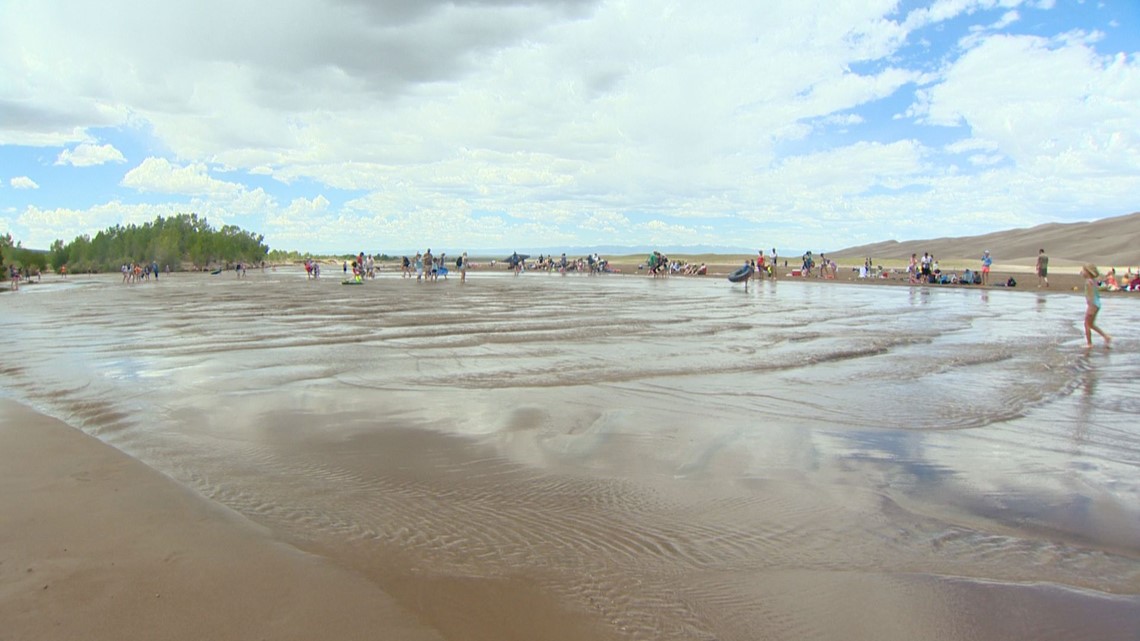
The surge flow in Medano Creek is a rare, natural occurrence that happens when the stream flows in rhythmic curves across the sand.
This phenomenon requires a steep gradient to give the stream more speed, a smooth bed (just what’s created by the sand) and enough water to create the surges.
Surge flow typically happens in early spring, but with the high snowpack and runoff, it’s still going down.
The peak was June 9, but the surge flow is still continuing above average.
You can learn about the latest conditions here: bit.ly/2rddDxz
I hate water. Is there anything else I can do?

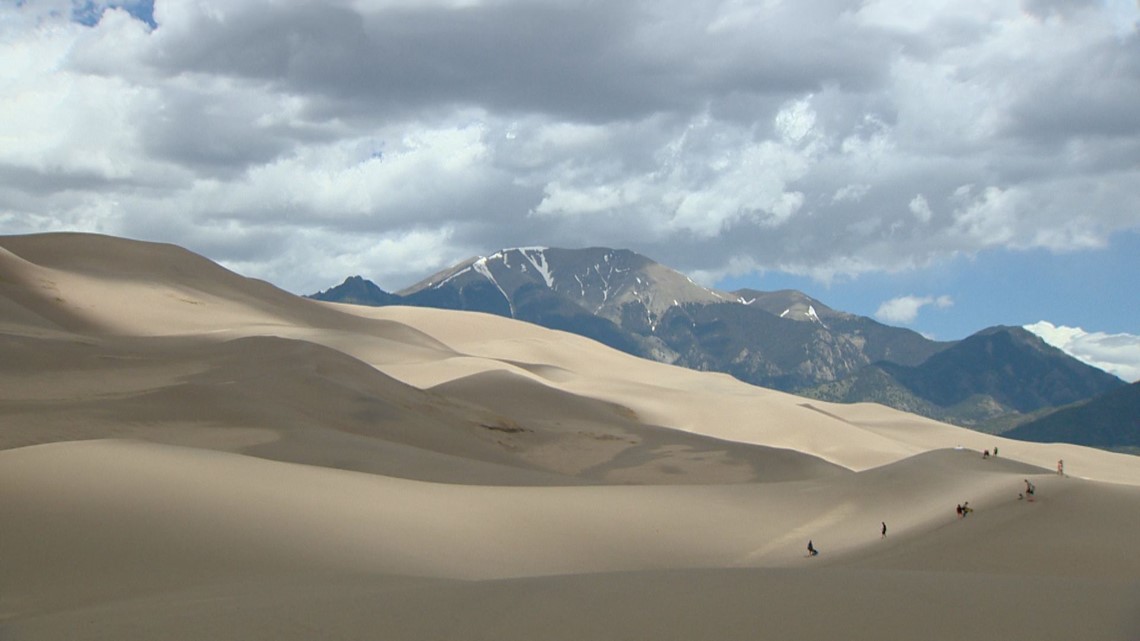
Absolutely! There are no designated hiking trails in the Sand Dunes, which means you can explore as you wish. One recommended trip is to scale all of the dunes that are more than 700 feet tall – especially the one closet to the parking lot.
This takes about two hours and affords amazing views of the dunes and valley below.


If you get sick of the sand, the Mosca Pass trail scales a big part of the Sandre de Cristo Mountains.

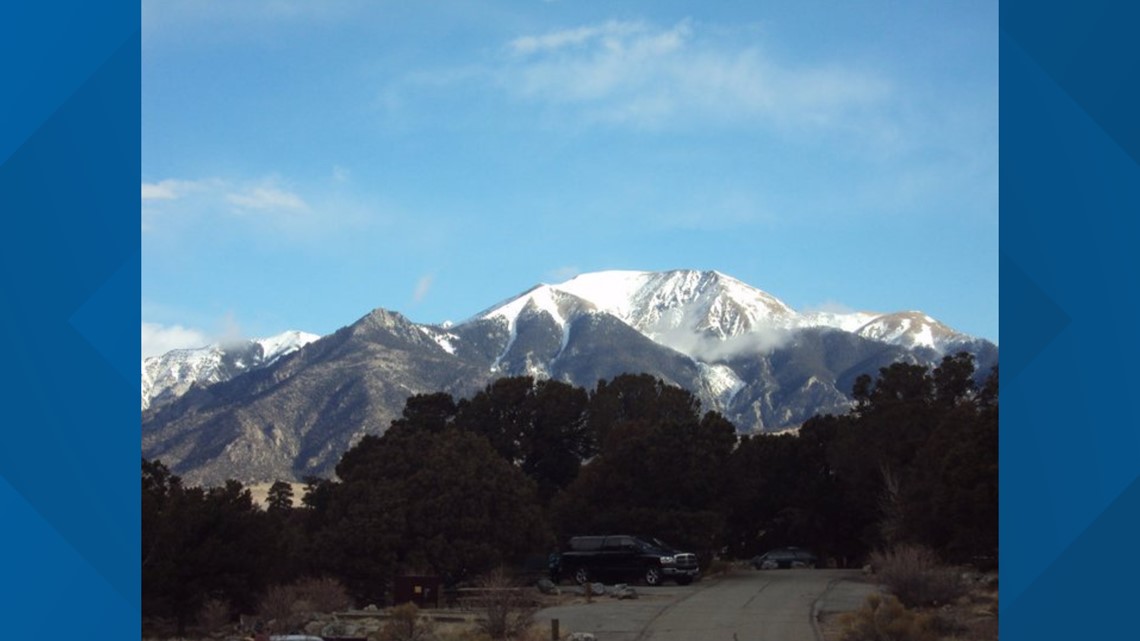
The Sand Ramp Trail, meanwhile, leads to some of the lesser-known backpacking sites.
Learn more about hiking in the park here: https://bit.ly/2YayanO
If hiking isn’t your jam, the Sand Dunes are great for sandboarding and sand sledding.
Don’t bring your nice skis – instead, there’s special gear for it. Learn more here: https://bit.ly/2d3Ly8k
SUGGESTED VIDEOS | Local stories from 9NEWS

